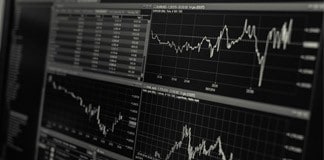My opinion is that the vast majority of private investors have little hope of outperforming the market by picking their own share portfolio or by investing in managed funds.
Those who do manage to beat the market, do so by chance.
Why?
Consider those individuals who run investment funds, making share purchase/allocation decisions on behalf of the fund.
These are intelligent people, who have often graduated from the best universities in the country. They dedicate their working week (and often weekends) to generate the best returns possible for their investors. They have expert knowledge on the workings of equity markets, expected earnings for the companies they are tracking and access to independent research from equity research analysts.
After ongoing investing fees, very few investment funds beat their market index over a ten year period.
Private investors often have their own full time occupations, limited time to spend analysing listed companies results and limited access to independent research.
If the majority of experts, with all the research and funding behind them, cannot beat the markets over a ten year period, what chance do private investors have?
So, how do you invest in the performance of the stock market as a whole?
The simplest way is to invest in an exchange traded fund (or ETF) which tracks the performance of global equity markets.
An ETF is simply a basket of securities that tracks the performance of equity indices. There are ETF’s available for most indices (e.g. FTSE 100, FTSE 250, S&P 500). However, I personally invest in a global equity tracker.
Why choose a global equity tracker and not a FTSE 100 index tracker?
Frankly, nobody knows which markets will outperform. All market prices are set based on supply and demand dynamics and to say that the FTSE 100 will outperform other global indices is nothing but guesswork.
As global equity trackers are not actively managed funds, the fees can be much lower which means that less of your potential capital appreciation will be end up in fund managers pockets.
Now, following the performance of the market doesn’t guarantee profit. However, neither does investing in shares yourself or in active investment funds. As mentioned above, very few active funds are able to beat passive ETF funds over a ten year period, after taking fees into account.
The key premise is that we, as investors, cannot predict the price of shares better than the market.
So, why do so few funds beat passive funds over a 10-year period?
The main reason is fees, which put actively managed funds at a significant cost disadvantage.
By way of example, I will pick two funds from my favourite investment platform, Fidelity. One, an actively managed fund. The other, a passive global ETF. In this example, we will use a £10,000 investment.
Actively managed fund
The ‘Artemis Global Growth Fund I Acc’ is an actively managed global equity fund which aims to achieve long-term capital growth from a diversified portfolio investing in any economic sector in any global market.
At the time of writing, the fees for investing in this fund include an 0.87% ongoing charge (annual) and 0.54% transaction cost (also annual). The Fidelity service fee is an additional 0.35% for an investment of £10,000. The total fees are therefore 1.76% (0.87+0.54+0.35).
Passive ETF
The ‘Vanguard FTSE All-World UCITS ETF’ is a passive ETF which seeks to provide long-term capital growth by tracking the performance of the FTSE All-World index, which is a market-capitalisation weighted index of shares of large/mid-cap companies in both developed and emerging economies.
At the time of writing, the fees for investing in this ETF include an ongoing charge is 0.22% (annual) and 0.02% transaction cost (also annual). The Fidelity service fee remains at an additional 0.35% for an investment of £10,000. The total fees are therefore 0.59%.
This means that the cost disadvantage of investing in the actively managed fund is 1.17%.
What difference does that make to returns?
Comparison of fees
Actively managed fund – A £10,000 investment, growing at an average of 6.0% per annum for 25 years, with fees of 1.76% would be worth £28,240. Over this time period, fees of £14,679 would have been charged.
Passive ETF – A £10,000 investment, growing at an average of 6.0% per annum for 25 years, with fees of 0.59% would be worth £37,329. Over this time period, fees of £5,590 would have been charged.
So with the actively managed fund, your investment would be worth over £9,000 less than the passive ETF after 25 years, assuming the same average returns.
Now this example was just using a one-off £10,000 investment.
Now imagine a scenario of an individual investing £500 per month for 40 years. Investment value if investing in the actively managed fund would be £617,277 (with £341,207 total fees) whereas investment value if investing in the passive fund would be £824,877 (with £133,608 total fees).
Here, there would be an enormous £207,599 difference.
Hopefully this has helped to explain the significant potential benefits of investing in low-fee world equity trackers.
If you want to learn more, sign up for a Fidelity account and learn more about investing in tracker funds and ETFs.


